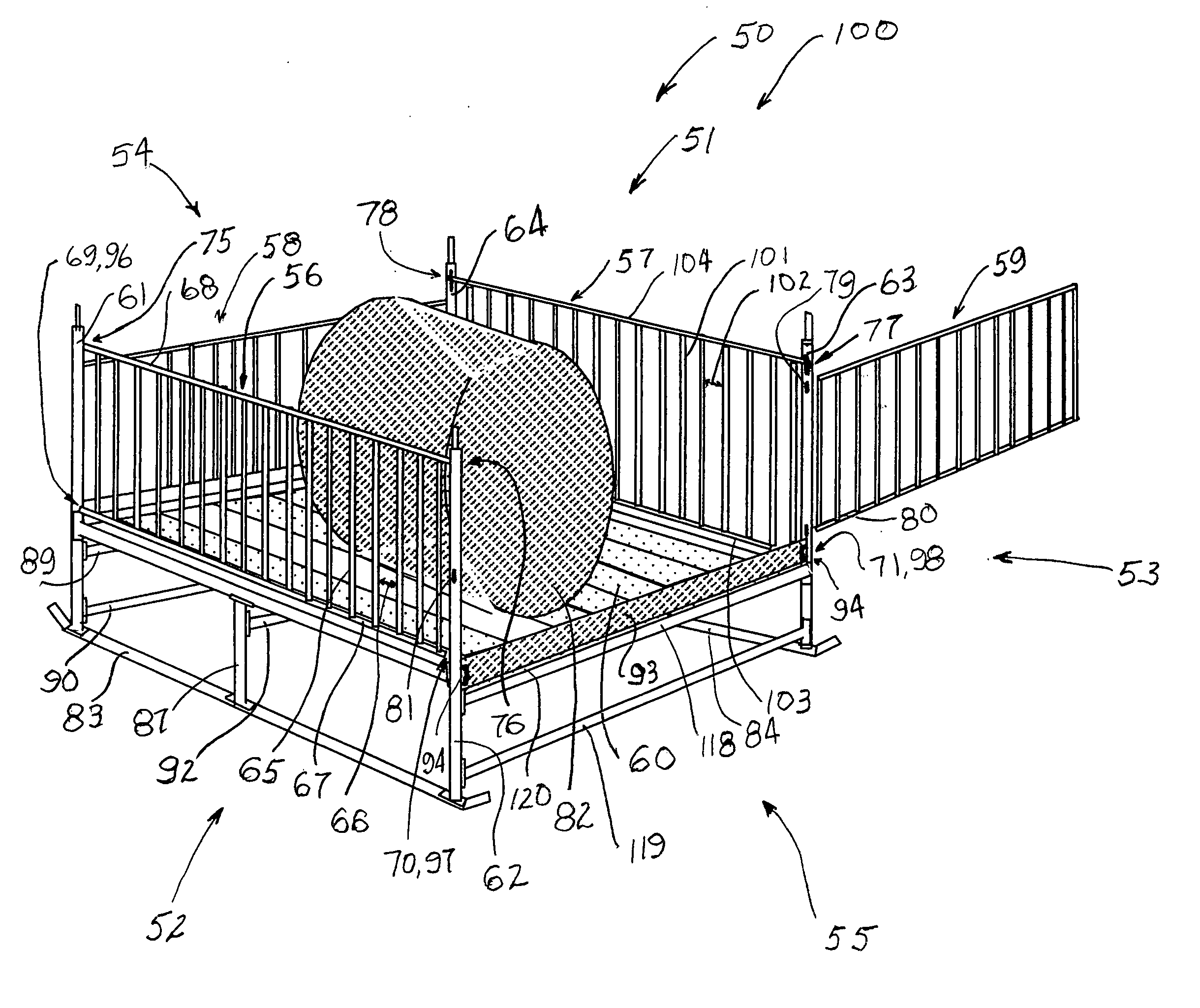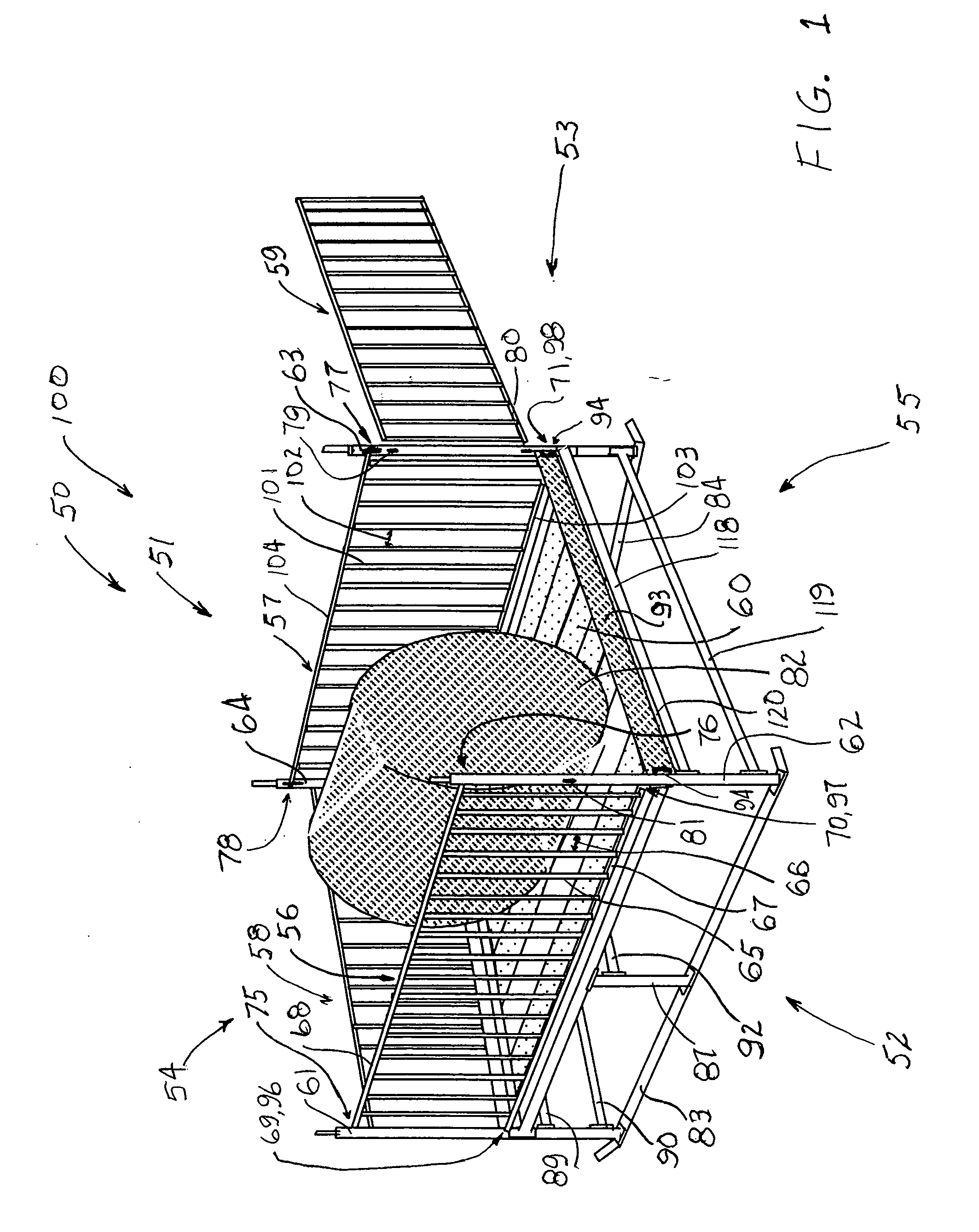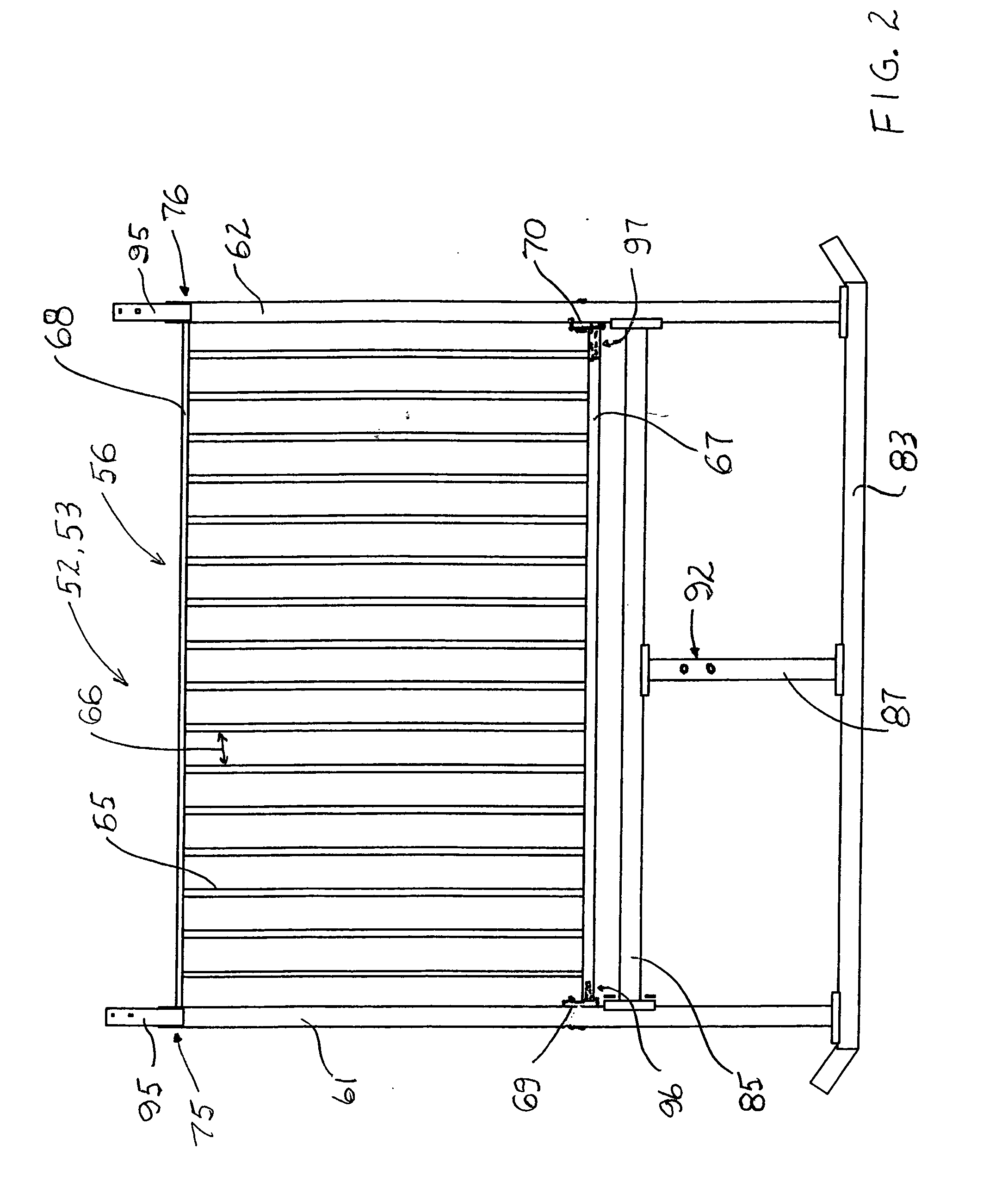Kit of parts for and a livestock feeder
a technology of parts and livestock feeders, applied in the field of livestock feeders, can solve the problems of ingesting contaminants such as sand and animal waste, waste and contamination, respiratory problems, etc., and achieve the effect of reducing feed was
- Summary
- Abstract
- Description
- Claims
- Application Information
AI Technical Summary
Benefits of technology
Problems solved by technology
Method used
Image
Examples
Embodiment Construction
[0025]FIG. 1 depicts a pictorial view of a preferred illustrative livestock feeder 50 of the present invention. The feeder is assembled from a kit of parts 100, which is commercially available from Klene Pipe Structures, Greensburg, Ind. The livestock feeder is intended to feed livestock such as cattle or horses a supply of feed 82 such as a large 1,500 pound bale of hay. However, any size bale of hay will work equally well. The bales can be round or square. The supply of feed can also include loose hay or silage or any other type of feed in which livestock can feed through the fold-down and gravity-pulled side grills 56 and 57. Opposing, fold-down grills 56 and 57 can pivot toward floor 60 and lean against the hay or other feed on the floor so that livestock must pull the hay through grill bar spaces 66 and 102 between grill spacer bars 56 and 101, respectively. The fold-down grills allow an animal to bite only small portions of feed or hay at a time through the spacer bars thus, e...
PUM
 Login to View More
Login to View More Abstract
Description
Claims
Application Information
 Login to View More
Login to View More - R&D
- Intellectual Property
- Life Sciences
- Materials
- Tech Scout
- Unparalleled Data Quality
- Higher Quality Content
- 60% Fewer Hallucinations
Browse by: Latest US Patents, China's latest patents, Technical Efficacy Thesaurus, Application Domain, Technology Topic, Popular Technical Reports.
© 2025 PatSnap. All rights reserved.Legal|Privacy policy|Modern Slavery Act Transparency Statement|Sitemap|About US| Contact US: help@patsnap.com



